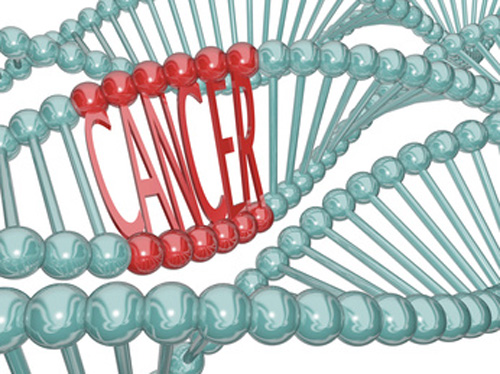RNA surveillance turns oncogenic
Precise RNA regulation is a quality control mechanism that is important for normal development and to prevent disease. Aberrant RNAs require identification and destruction to avoid translation of defective proteins. Insco et al. report that cyclin-dependent kinase 13 (CDK13), which activates an RNA surveillance mechanism to degrade abnormal RNAs, also has a tumor-suppressor function (see the Perspective by Fisher). When CDK13 was mutated in an animal melanoma model, accumulation and translation of aberrant RNAs resulted in more aggressive malignancy. Analysis of other cancer types revealed similar CDK13 mutations and showed that additional RNA surveillance genes were recurrently mutated in human tumors. These findings suggest that RNA surveillance may have a previously unrecognized tumor-suppressive role. —PNK and YN
Structured Abstract
INTRODUCTION
Despite recent therapeutic advances, new treatments are needed for melanoma patients. Difficult-to-treat melanoma subsets rely on oncogenic gene expression for growth and therapy resistance. In normal cells, gene expression is tightly regulated by RNA surveillance pathways. Newly described mechanisms detect and degrade unnecessary RNA species in the nucleus to ensure gene expression quality.
RATIONALE
Transcriptional cyclin-dependent kinases (CDKs) are a family of kinases that have roles in directly controlling gene expression. We examined the transcriptional CDK loci in publicly available melanoma patient data to investigate whether any of these kinases could be a therapeutic target for melanoma. Unexpectedly, we observed an enrichment of CDK13 kinase domain mutations in melanoma, suggesting that CDK13 is a dominant-negative tumor suppressor. Therefore, we investigated the mechanism of mutant CDK13-mediated oncogenesis.
RESULTS
CDK13 is mutated in 3.9% of cutaneous melanomas, and these mutations are selected for as measured by a computational tool that considers mutational load and severity. Kinase domain mutations were enriched compared with mutations in the rest of the protein in melanoma (2.2-fold) and other cancers (1.8-fold), suggesting dominant-negative activity. The CDK13 kinase domain mutations largely overlap with mutations that cause a CDK13-related developmental disorder. Expression of kinase-mutated CDK13 expedited melanoma onset in a zebrafish melanoma model and caused human melanoma cells to be more proliferative, demonstrating CDK13’s dominant-negative tumor-suppressive function.
Because CDK13 is related to known transcriptional kinases, we tested for a global gene expression phenotype by quantifying differential exon usage. We found that CDK13 mutant expression or loss of function resulted in increased expression of first compared with last exons, indicating the accumulation of short RNAs. Using a specialized sequencing technique, we defined the 3′ end of RNAs, which showed that mutant CDK13 zebrafish melanomas and human melanoma cells had increased prematurely terminated RNAs (ptRNAs) ending in introns. We found that ptRNAs accumulate posttranscriptionally through lack of degradation using digital droplet PCR and nascent RNA sequencing. Because ptRNAs are capped, spliced, and polyadenylated, we performed whole-cell proteomics of mutant CDK13 versus control zebrafish melanomas and found translation of some ptRNAs, including their intronic regions, which could be a source of neoantigens.
To elucidate the mechanism of mutant CDK13 oncogenesis, we immunoprecipitated CDK13 and discovered binding to proteins associated with the polyA tail exosome targeting (PAXT) complex, which targets ptRNAs for degradation in the nucleus. We immunoprecipitated ZC3H14 from CDK13WT and CDK13mut human melanoma cells and found that ZC3H14 lacks phosphorylation at S475 in CDK13mut cells, suggesting that CDK13 directly phosphorylates ZC3H14 S475. We rescued PAXT recruitment and activity with expression of a ZC3H14 phosphomimetic mutant in CDK13mut cells. We also showed that the expression of a nonphosphorylatable ZC3H14 decreased PAXT recruitment and activation in CDK13WT cells. CDK13 activated by CCNT1 was able to in vitro phosphorylate ZC3H14WT, but not ZC3H14S475A, showing that CDK13 can directly phosphorylate ZC3H14 on the relevant residue.
We found that ptRNAs accumulated in other CDK13mut cancers. To determine whether ptRNA expression is sufficient to expedite oncogenesis, we expressed two human ptRNAs in the zebrafish model and found that they both expedited melanoma onset. Finally, we found that additional nuclear RNA surveillance components are recurrently mutated in cancer. These experiments show that ptRNAs can promote cancer phenotypes and that components surveilling aberrant RNAs are mutated in cancer.
CONCLUSION
Our work shows that CDK13 has properties consistent with a tumor suppressor, and that mutant CDK13 is oncogenic because of deficient RNA surveillance. Our finding that recurrent mutations occur in additional PAXT components suggests a broad, previously unrecognized tumor-suppressive role for nuclear RNA surveillance…







